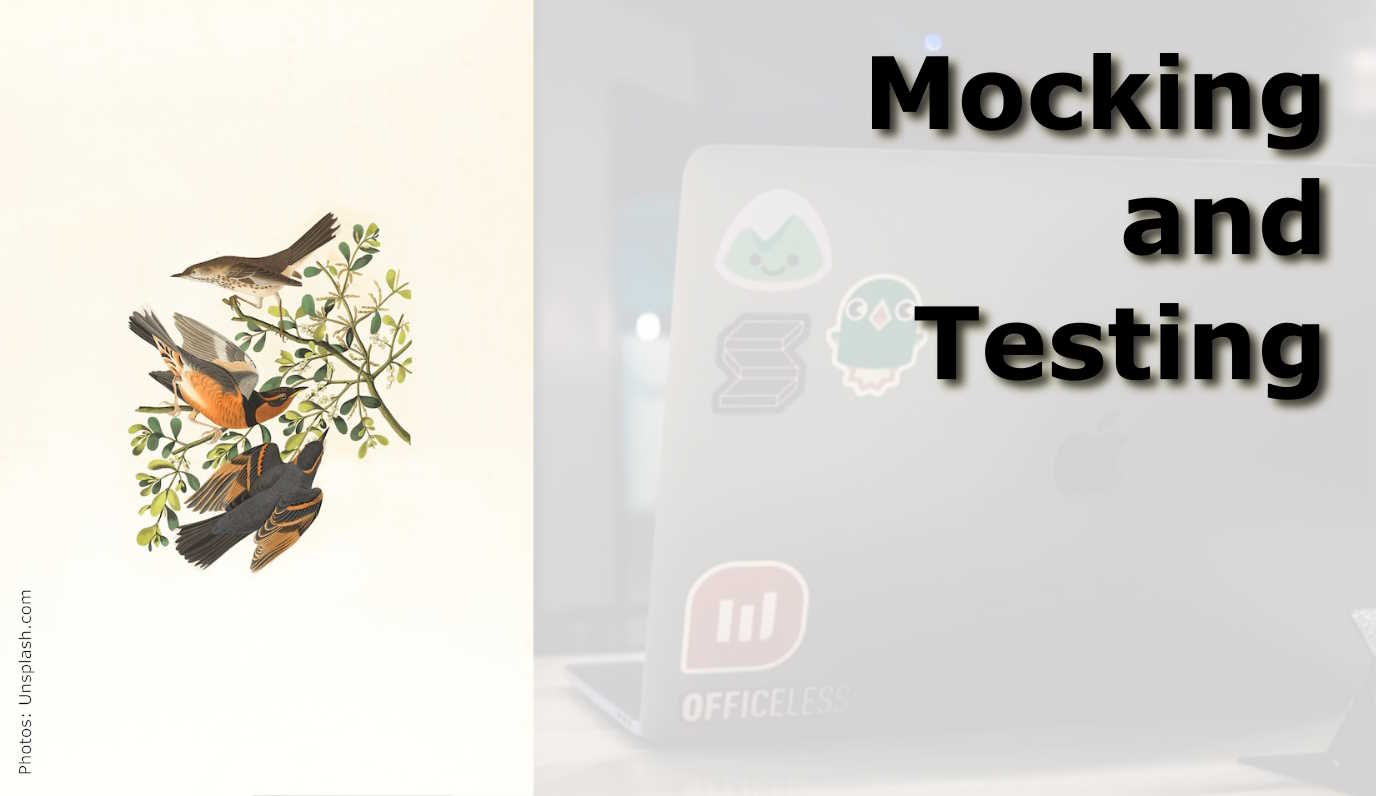Mocking and Testing

Concepts for testing. It’s a bit dry though.
- Introduction
- Understanding Python Testing
- Introduction to Mocking
- Types of Mocking in Python
- How to Use Mocking for Testing
- Best Practices for Python Mocking and Testing
- Conclusion
Introduction
Explanation of Python mocking
Python mocking is a powerful technique used in software development to simulate the behavior of objects or functions during testing. This technique is useful in isolating individual components of code to test them without relying on other dependencies. With Python mocking, developers can create test cases for their code and simulate how the code will function in different environments without actually having to run the code in those environments.
Importance of testing in software development
Testing is essential in software development to ensure that the software systems being developed are reliable, correct, and of high quality. The primary purpose of testing is to identify bugs, performance issues, and functional problems in the code early in the development process. Through testing, developers can ensure that their code works as expected in different environments and that it is robust enough to handle different scenarios.

Photo by BoliviaInteligente on Unsplash
Understanding Python Testing
Types of testing
Python testing involves several types of testing, including unit testing, integration testing, and acceptance testing.
- Unit Testing: Unit testing is an essential type of testing that tests individual units or components of a software system. In unit testing, developers create test cases to test the behavior of the code under specific inputs and conditions.
- Integration Testing: Integration testing involves testing how individual units of code work together to form a complete system. This type of testing ensures that different parts of the code can interact and communicate with each other as expected.
- Acceptance Testing: Acceptance testing tests the overall functionality and usability of a software system. It ensures that the software system meets the requirements and specifications outlined by the client or stakeholders.
Benefits of unit testing
Unit testing provides several benefits for developers, including:
- Early Detection of Bugs: Unit testing allows developers to detect and fix bugs early in the development process. By testing individual units of code, developers can catch errors before they become bigger issues that are difficult to fix.
- Facilitates Refactoring: Unit testing makes it easier for developers to refactor their code. Refactoring is the process of improving the design and structure of code without changing its behavior. With unit tests in place, developers can confidently make changes to their code and ensure that it still works as expected.
- Simplifies Debugging: Unit testing makes debugging easier by pinpointing the source of errors in the code. By running test cases, developers can identify which unit of code is causing the error, making it easier to fix.
Creating test cases
Creating test cases is an integral part of Python testing. Test cases are sets of inputs and expected outputs that developers create to test their code’s behavior. By creating test cases, developers can ensure that their code functions correctly under different scenarios. When creating test cases, developers should consider the following:
- Test inputs should cover a wide range of scenarios to ensure that the code works as expected under different conditions.
- Test cases should be easy to read and understand.
- Developers should test for both expected and unexpected outputs to ensure that the code handles errors correctly.
- Test cases should be independent of each other, meaning that the outcome of one test case should not impact the outcome of another test case.
In the next section, I will discuss Python mocking in more detail, including its types and how to use it effectively for testing.

Photo by Moritz Kindler on Unsplash
Introduction to Mocking
Definition of mocking
Mocking is a technique used in software development to simulate the behavior of an object or component in a controlled environment. In Python, mocking involves creating mock objects that mimic the behavior of real objects or components. These mock objects are used in place of real objects during testing to isolate and test individual units of code.
Benefits of mocking
Mocking provides several benefits for developers, including:
- Isolation of Code: By using mock objects, developers can isolate the code they want to test from other components that it interacts with. This isolation makes it easier to identify and fix bugs in the code.
- Improved Test Coverage: Mocking enables developers to test scenarios that may be difficult to reproduce in the real world. For example, developers can simulate errors or edge cases that may not occur frequently in the real world but are still important to test for.
- Faster Test Execution: Mocking can speed up the testing process by removing the need for real objects or components. With mock objects, developers can test individual units of code quickly and easily without having to wait for the entire system to be set up.
When to use mocking
Mocking is particularly useful in the following scenarios:
- When testing code that interacts with external systems or APIs that may be unreliable or difficult to access.
- When testing code that is dependent on other components that are not yet fully developed or available.
- When testing scenarios that are difficult or time-consuming to reproduce in the real world.
- When testing code that is difficult to test due to its complexity or dependencies on other components.
In the next section, I will discuss the different types of Python mocking and how to use them effectively for testing.

Photo by Boston Public Library on Unsplash
Types of Mocking in Python
Mocking in Python can be achieved using several techniques, including monkey patching, stubbing, dummy objects, and mock objects.
Monkey Patching
Monkey patching involves replacing or modifying code at runtime. In Python, this technique can be used to modify the behavior of a function or method by replacing it with a mock function or method. This technique is useful when testing code that interacts with external systems or APIs that may be unreliable or difficult to access.
Stubbing
Stubbing involves replacing a method or function with a simple implementation that returns a predetermined value. This technique is useful when testing code that depends on other components that are not yet fully developed or available. By stubbing out these components, developers can test the code independently of the missing components.
Dummy Objects
Dummy objects are objects that are created solely for the purpose of satisfying dependencies in the code being tested. These objects are not used for any other purpose and have no behavior or functionality. Dummy objects are useful when testing code that is dependent on other components that are not yet fully developed or available.
Mock Objects
Mock objects are objects that mimic the behavior of real objects or components. In Python, mock objects can be created using the built-in unittest.mock module. These objects are used in place of real objects during testing to isolate and test individual units of code. Mock objects are useful for testing scenarios that are difficult or time-consuming to reproduce in the real world.
In the next section, I will discuss how to use Python mocking effectively in testing, including best practices and common pitfalls to avoid.

Photo by David Clode on Unsplash
How to Use Mocking for Testing
Mocking can be a powerful tool for testing Python code, but it requires careful planning and execution to be effective.
Setting up test environment
Before using mocking for testing, it is important to set up a test environment. This environment should include all the necessary dependencies, including any mock objects that will be used in the tests. It is important to ensure that the test environment is isolated from the production environment to prevent any unintended consequences.
Creating mock objects
To create mock objects in Python, developers can use the built-in unittest.mock module. This module provides several functions and classes for creating and configuring mock objects. When creating mock objects, developers should ensure that they mimic the behavior of the real objects or components as closely as possible.
Running tests with mock objects
Once mock objects have been created, they can be used in place of real objects during testing. Developers should ensure that their tests are properly configured to use the mock objects, and that the code being tested is isolated from other components.
Verifying test results
After running tests with mock objects, developers should verify that the results are correct. This involves checking that the expected outputs are produced and that any interactions with the mock objects are consistent with the desired behavior. It is important to note that while mocking can be a powerful tool for testing, it is not a replacement for real-world testing. Developers should use mocking in conjunction with other testing techniques, such as unit testing, integration testing, and acceptance testing, to ensure that their code is thoroughly tested.

Photo by George Pagan III on Unsplash
Best Practices for Python Mocking and Testing
To use Python mocking effectively in testing, it is important to follow best practices that ensure reliable and accurate results.
Isolating tests
One of the most important best practices for testing with mock objects is to isolate tests as much as possible. This means that tests should be designed to test individual units of code in isolation from other components. This approach helps to ensure that test results are accurate and reliable, and that any issues are easily identifiable and fixable.
Test coverage
Another important best practice for testing with mock objects is to ensure that tests provide adequate coverage of the code being tested. This means that tests should cover all possible scenarios and edge cases, and should include a variety of inputs and outputs. This approach helps to ensure that the code is thoroughly tested and that any issues are identified and resolved before deployment.
Using assertions
When using mock objects in testing, it is important to use assertions to verify that the expected results are produced. Assertions are statements that check whether a condition is true, and can be used to compare the output of a function or method with the expected output. Using assertions helps to ensure that the code is functioning as expected, and that any issues are quickly identified and resolved.
Avoiding overuse of mocking
While mocking can be a powerful tool for testing, it is important to avoid overusing it. Overusing mocking can lead to overly complex and difficult to maintain code, and can make it more difficult to identify and fix issues. Developers should use mocking in conjunction with other testing techniques, and should use it sparingly and only when necessary. By following these best practices, developers can ensure that their Python code is thoroughly tested and reliable, and that any issues are quickly identified and resolved.
In the final section of this post, I will summarize the key takeaways from this discussion of Python mocking and testing, and provide some additional resources for developers looking to learn more about this topic.

Photo by Mahdi Bafande on Unsplash
Conclusion
In this post, I’ve explored the world of Python mocking and testing. I began by introducing the concept of Python mocking and why it’s important for software development. I then delved into the various types of testing, the benefits of unit testing, and how to create test cases.
From there, I introduced mocking, including its definition, benefits, and when to use it. I explored the different types of mocking available in Python, such as monkey patching, stubbing, dummy objects, and mock objects.
Next, I discussed how to use mocking in testing, including setting up a test environment, creating mock objects, running tests with mock objects, and verifying test results.
Finally, I outlined the best practices for Python mocking and testing, including isolating tests, ensuring test coverage, using assertions, and avoiding overuse of mocking.
In conclusion, Python mocking and testing are essential tools for developers to ensure that their code is reliable and performs as expected. By using these techniques, developers can catch issues early in the development process and avoid potential problems down the road. This is a solid foundation to start using Python mocking and testing in your own projects.
If you want to learn more about Python mocking and testing, there are plenty of additional resources available online. Some helpful resources include the Python documentation, online forums, and tutorials. I recommend that you continue to practice and refine your skills in this area, as it can greatly improve the quality and reliability of your code.
Resources
- The official Python documentation on unittest.mock: https://docs.python.org/3/library/unittest.mock.html
- A comprehensive guide to Python mocking by Real Python: https://realpython.com/python-mock-library/
- The pytest-mock library for mocking in Pytest: https://pypi.org/project/pytest-mock/
- The mockito library for mocking in Python: https://github.com/kaste/mockito-python